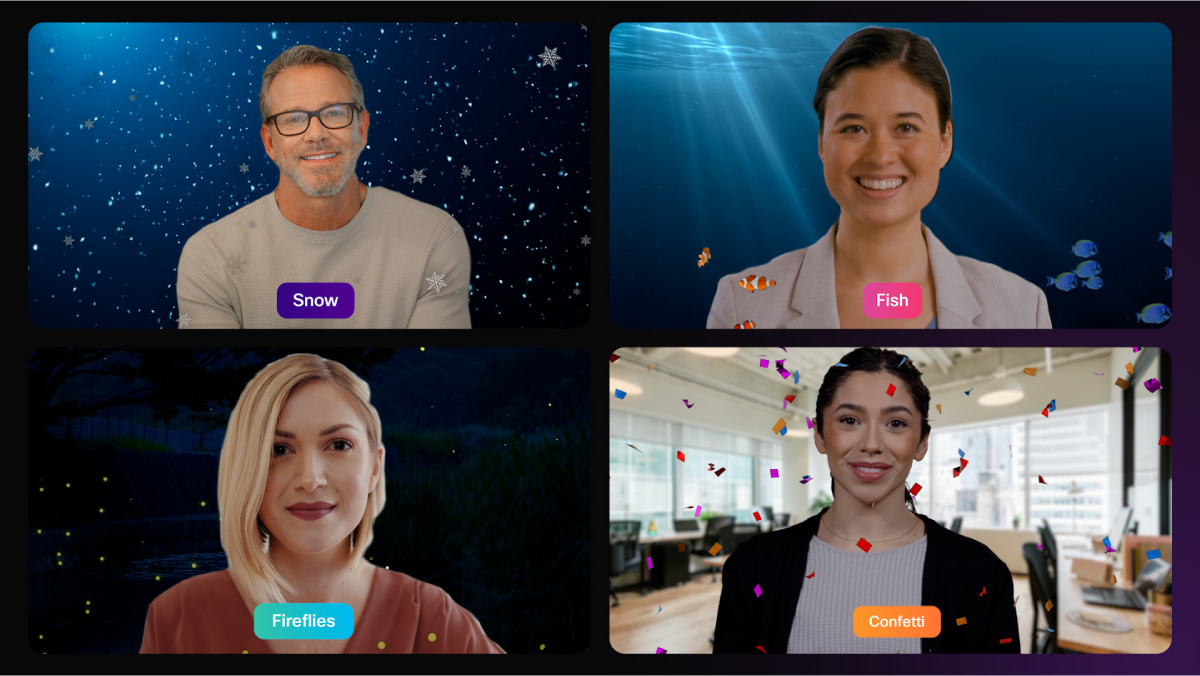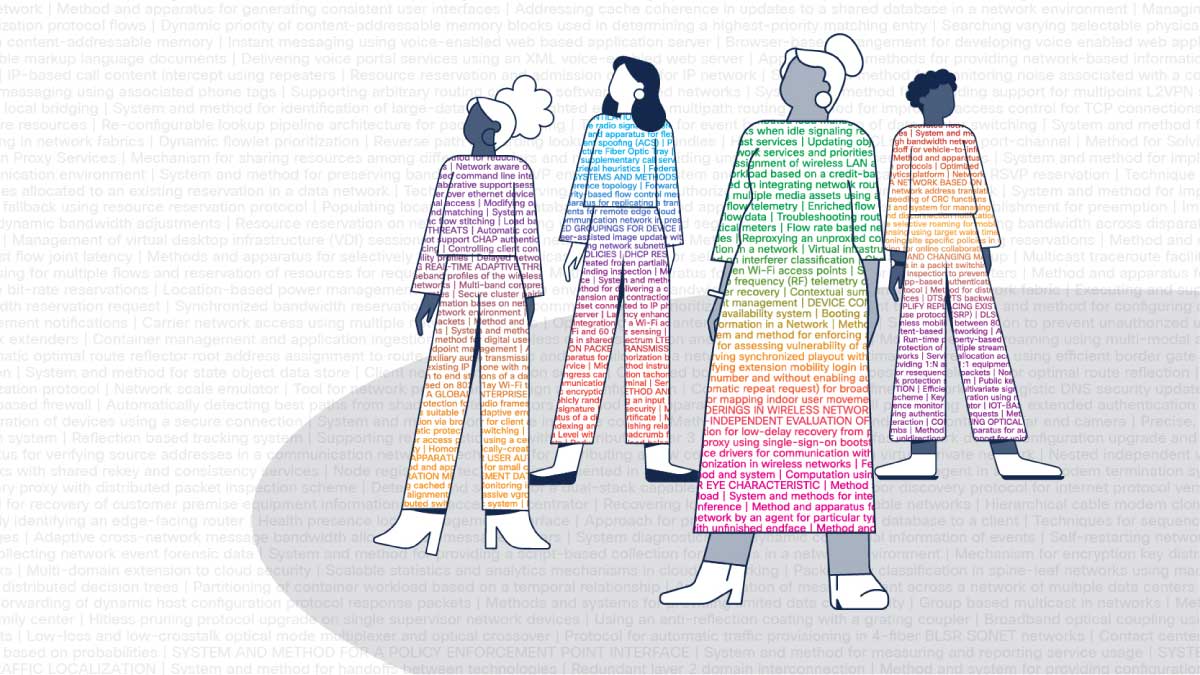The hybrid work revolution is driving flexibility, creativity, and new opportunities around the world. And Webex has supported it at every step.
But challenges remain in creating an equitable, seamless, and secure work experience from an office, at home, or just about anywhere in between.
That’s why Webex continues to innovate at a relentless pace, with new features that incorporate AI and other advanced technologies.
We spoke with Lorrissa Horton, Cisco’s SVP/GM and chief product officer for collaboration, about how Webex is enabling great work experiences in offices, homes, contact centers, and just about anywhere else people choose to work.
Great to have you, Lorrissa! Hybrid work has driven nothing less than a revolution in recent years, but it’s not always easy for organizations. What are some challenges people are still grappling with?
Many organizations have now experienced nearly 100 percent remote work. And now they’re struggling with what that next phase of hybrid work really means. We’ve seen everything from mandating everyone to come back, which was met with a lot of resistance, to being very flexible about how many days people come into the office. But everyone is still struggling with what does that mean? Most organizations don’t have the network capacity, or the security to do this much at hybrid scale.
So, hybrid work is actually more challenging than remote work?
Yes, more than 90 percent of meetings are going to have at least one remote participant. The challenge is, how do you make sure everyone is an equal, first-class citizen in those hybrid communications. When everyone was at home, everyone was a box on your screen; it was still an equal playing field. The conversation now is, how do we successfully work at scale in a hybrid capacity?
We’re going to get to some of the exciting new features in Webex in a minute. But looking back over the past few years, what has set Webex apart?
Webex has been in this industry for a long time now. So, we’ve learned directly from our customers. With features like background-noise removal and real-time translation, we’re supporting this hybrid-work revolution. Inclusivity is top of mind for us. We’re actually driving equity in the workforce, in allowing people to choose where they want to work.
Security looms large as well, doesn’t it?
Governments, businesses, banks, and doctors trust us with their most critical information. Because we take security very seriously. We design security in right from the get-go. We don't just patch it when we get caught.
You mentioned noise reduction and real-time language translation, but the innovation never stops. Let’s talk about some of the new dimensions to Webex driven by AI. First off, how can Super Scaling improve the quality of meetings?
Super Scaling is a continuation of work that we did during the pandemic. Because not every community had equal infrastructure for internet connectivity. So, some people weren't necessarily showing up equivalently. With Super Scaling, we’re able to take a lower-quality stream and upscale, or Super Scale it. That gives you, for example, the same clarity of facial reactions and expressions, even with low-grade cameras and low-bandwidth challenges.
Many of us fret over how we appear on camera, or how best to engage in meetings. How are new Webex features helping in that regard?
Webex’s Smart Relighting feature can now adjust the light depending on whether we are at home, in a café, on a train, wherever. But also, someone may not be an extrovert and may be more inclined to register their reaction with a gesture, like a thumbs up or by clapping. So, we’re turning these gestures into animations directly into the video. Again, it draws from our core of inclusivity. Not everyone is going to be the loudest speaker in the meeting, but that doesn't mean they’re not engaged or have an equal voice.
For people to want to come to the office, a great experience is essential. I love the name Cinematic Meetings. How is it transforming the in-office experience?
When we think about a remote person watching what’s happening in a conference room, it typically is a pretty bad experience. They might see one view of the table and barely see the faces of the speakers. With Cinematic Meetings, we’re able to have a “my camera” experience. Just like a producer on a movie, it will always make sure you’re getting the best view of that that conversation by cutting to different camera angles and streams.
Webex plays a big role in contact centers as well. What is Topic Analysis, and how will it help?
Customer experience is top of mind so many CIOs. And people are realizing that contact centers impact the perception of your brand and your products. So, they’re asking, how do we support more customers even on a fixed budget? Part of that is understanding what is driving calls into your contact center and how the calls went. So, we’re analyzing call logs and chat scripts. And determining the areas where you probably could automate and self-service with a virtual agent, the areas where your people could use a little more training, and which issues are taking the longest. So, it's really going to help companies understand what their customers are looking for and how best to serve their needs.
At the same time, generative AI is coming into play. How is that impacting the contact-center experience?
Generative AI will enable virtual agents to be much more effective and responsive. It will also help generate instant answers for the human agents. So, at their fingertips, they're able to get correct responses to what we believe are the questions that are coming up most often. So, automated responses can handle some of the flow, and the agents can create the solution.
We’ve all had that frustration where you give all your information to the bot and then the human agent comes on and has been told none of it.
That is one of the biggest differentiators in our solution, ensuring that that handoff between the virtual agent and the human agent is warm and cozy. So, they know everything you've already said, everything’s been verified, and you don’t need to repeat yourself.
Thank you again, Lorrissa. A lot of exciting new ideas here. How will Webex continue to transform hybrid work?
Seeing how people have been so open and receptive to the strength and power of AI — and are starting to incorporate it into how they do their jobs — is honestly a giant leap forward. We've opened up our eyes, and I think that’s going to create a tsunami of change in almost every industry. Around how we think, how we do work, and where we focus our energy. So that’s super exciting to me. And I’m especially excited that we have thought so deeply and holistically about equity and inclusion in this next phase of hybrid work. We are definitely dedicated to driving that Inclusive Future for all.




